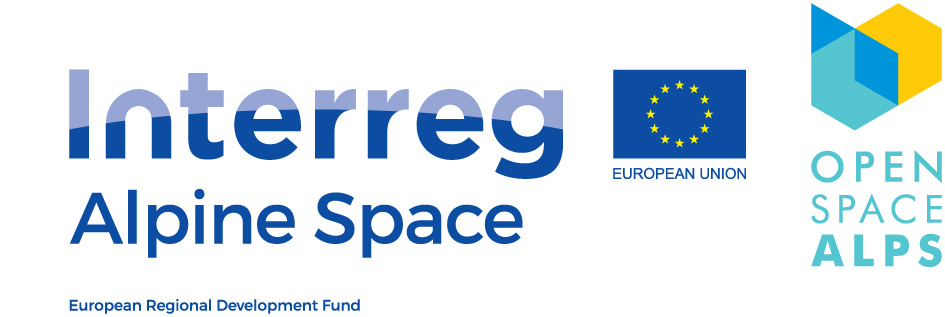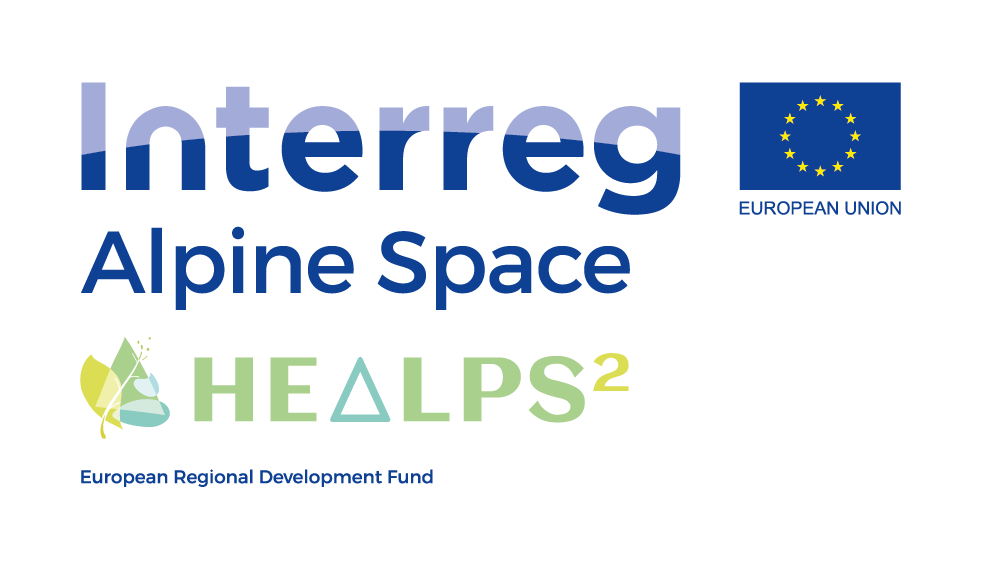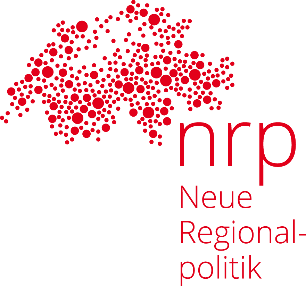The Elections of the ALPARC Council took place at the General Assembly on 22 January. The following persons were newly elected to the council of Directors: Olivier Putot (Natural Park Vercors), Astrid Wiedenhofer (South Tyrolian Nature Parks), Massimo Bocca (Mont Avic Nature Park), Ruedi Haller (Swiss National Park), Dominique Weissen (Swiss Pärke Network) and Cathrine Frick (Office for the Environment, Principality of Liechtenstein).
Our colleagues Anne-Marie Forgeoux (Region Sud, Provence-Alpes-Côte d’Azur), Geneviève Borodine (Region Auvergne-Rhône Alpes), Lionel Tardy (Nature Park Baronnies Provencales), Margareth Pallhuber (South Tyrolian Nature Parks), Christian Stauffer (Network of Swiss Parks) and Helmut Kindle (Office for the Environment, Principality of Liechtenstein) have resigned from the panel. We would like to thank them all for their engagement for ALPARC over the last years.
The previous ALPARC Board members (President Peter Oggier, Nature-Park Pfyn-Finges; Vice-Presidents Christian Schwoehrer, ASTERS and Andrea Bertrame, Prealpe Giulie; Secretary General Roland Baier, National Park Berchtesgaden and Treasurer Peter Rupitsch, National Park Hohe Tauern, Carinthia) have been confirmed by the newly elected ALPARC Council for a further 4-years mandate.
This provides continuity for the coming years, which should be a major advantage in these times.
As President, I look forward to further exciting projects and, above all, the Alpine-wide exchange between colleagues!
Dr. Peter Oggier
President
ALPARC
The Interreg Alpine Space “OpenSpaceAlps” project and the Academy for Territorial Development in the Leibniz Association (ARL) have joined forces in order to build a new network, based on the idea that especially approaches to open space planning should be developed and implemented across borders. The “AlpPlan” alpine spatial planning network aims to provide spatial and sectoral planning professionals, experts and decision-makers from all Alpine Space countries and regions with a platform for the transnational knowledge exchange of good practices and future solutions for sustainable land-use and spatial planning. The AlpPlan network will work in close cooperation with stakeholders among the existing transnational alpine cooperation framework, such as EUSALP and the Alpine Convention.
The planned activities of the AlpPlan network include:
- annual conferences, which deal with current topics of alpine spatial development
- workshops targeted at specific topics (e.g. international capacity building seminar for young professionals, scholars and advanced students on alpine open spaces)
- elaboration, negotiation and signing of a Memorandum of Cooperation (MoC) in alpine spatial planning
Further information on:
https://www.alpine-space.eu/projects/openspacealps/en/pilot-cases-and-participatory-activities/alpplan-network/about_alpplan

Sustainable development of alpine open spaces by enhancing spatial planning governance.
The Project aim is to foster sustainable development of Alpine Space by maintaining open spaces as part of alpine Green Infrastructure through an interlinked, multi-level transnational spatial governance considering integration of ecosystems functions and needs into policies.
ALPARC is a project partner and is responsible for the coordination of the Alpswide strategy and governance planning. After the elaboration of a summary of results and relevant data from former EU projects with a focus on Open Spaces, a work over the Alpswide cartographic representation of Open Spaces has started.
The test phase for the mapping has been focused on the exchange through two workshops over the procedure to follow at the data processing, the research of data sources to identify some infrastructure categories and their classification and differential treatment according to their level of spatial disturbance, this data is being compared and analysed with some of the results from former projects such as ALPBIONET2030 and the JECAMI tool. This process aims to represent the zoning of open spaces in the Alps and to identify the potential open spaces to be conserved

Lessons learnt from the Alpine Space project HEALPS2 and the partners’ networks.
On December 9th, more than eighty people participated at the second transnational stakeholder workshop of the project HEALPS2 to learn about innovative approaches for sustainable lifestyles in the Alps. The exchange was organised online in the framework of the Alpine Week Intermezzo 2020.
The potential of peripheral regions and protected areas for using natural resources is still a treasure waiting to be revealed. Valorising natural resources and integrating them into sustainable local economic value chains is a major challenge for regional developers, municipalities and other local stakeholders. Hence, the guiding question of the workshop was how can we bring together healthy living, sustainable resource use and new job opportunities in the different Alpine territories?
In this sense, Stéphane Adam from the French Federation of Nature Parks explained the success story of “Valeurs Parcs” a trademark which labels products and services coming from the park region and fulfilling specific criteria on ecological and social standards. Daniela Bredow from Nature Park Nagelfluhkette, the first transnational park between Germany, provided valuable insights on the park’s cooperation networks in the accommodation and food sector. Special attention was paid to the local beef production initiative “Naturpark Vollmilchkalb” which was founded by three mayors particularly interested in sustainable agriculture and landscape management.
Beatrice Demeglio from the Nature Park Aree Protette dell’Ossola in Italy presented the project Sociaalp which aims at relaunching the agricultural sector in the very remote zones of the region. At the heart of this project stays an agricultural network of producers, cooperatives and local institutions which aims at valorising customs and traditions such as terrace cultivation and the breeding of old cereal varieties. Moreover, the project is a unique opportunity to create jobs for socially marginalized people. As climate change is an urgent issue in the Alps, Julia Plattner, member of the Association Wanderers for a Changing World gave a talk on the project Climate Walk where several young people want to combine research, education and media-art across Europe to understand regional experiences of Climate Change.
These project approaches were complemented by an input of Dr. med. Elisabeth Gaus which added precious findings on the health impact of natural resources and especially physical activity outside. According to Dr. Gaus, movement in nature is not only the basis for our wellbeing but also for our physical and mental health. Moving outside not only improves the cardiovascular system and increases the oxygen supply in the body - it can also improve depressive moods and contribute to a healthy sense of well-being. Indeed, several scientific studies confirm that exercising outside in nature is very likely the best medicine to prevent diseases.
Though the workshop was organized online, innovative methods allowed for an interactive participatory exchange of the participants: two groups analysed the potential of internal and external success factors for the development of health tourism strategies; another group worked on youth perspectives and engagement aiming at involving young peoples’ wishes and needs for the Alpine region in order to stay or come back. And still another group prepared an outlook on the future scenario of health tourism in the Alps.
The workshop results are published on our project website and Facebook.
Stay tuned!
Website: www.alpine-space.eu/healps2
Facebook: @Healps2


HEALPS2 is an Interreg Alpine Space project co-financed by the European Union via the European Development Fund and the New Regional Policy in Switzerland.

On 13 January 2021 the French Ministry of the Environment organized the virtual “Mountain Biodiversity Day”. It served as a platform for discussions between experts and political representatives from mountain regions all over the world, working in the field of mountain biodiversity. The Mountain Biodiversity Day highlighted and promoted joint messages targeting the importance of mountains within the global Post-2020 Global Biodiversity Framework.
This pandemic is primarily not about bat soup, pangolins or specific viruses but all about our interactions, exploitation and destruction of nature. It is about the interfaces – these edges of destruction– between humans, wildlife and nature in general. Along with climate change, biodiversity loss and raging inequities and injustice, COVID-19 is just another symptom of an ailing planet and has starkly reminded us of the basic fact: Human, animal, plant, and environmental health and well-being are all intrinsically connected.
It is painfully apparent that addressing the complex interactions of human, animal, and environmental health requires environmentally inclusive, just and shared values that heed landscape- and society-level issues. The quality of current and future human and animal health and well-being will depend on our respectful, humble and responsible environmental stewardship.
One of the most important and proven solutions to this global crisis are protected areas. This is a practice that has been used by Indigenous Peoples and local communities for centuries, setting aside areas that have important natural, cultural, and spiritual values. In recent decades governments have created more and larger protected areas on land and sea, and there is strong evidence that effectively designed and managed protected areas are key to the conservation of biodiversity, climate mitigation and sustaining local livelihoods. However, many protected areas are not well managed; they do not represent the necessary diversity of ecosystems. And many of them are simply too small to be viable in the long term, especially in view of climate change. In a few words, protected areas must be located in the right places, be large enough and interconnected to be functional and sustain viable populations of key species and functions.
It is not sufficient to protect the highest elevations while neglecting the rampant land-use change across the valley floors. If we want our protected areas in the Alps to remain strongholds of biodiversity and long-term refugia for species, we necessarily need to protect the entire altitudinal gradients. Protection also provides numerous ecosystem services, including regulating climate and air quality, and amongst others providing water, energy food while also providing sociocultural benefits to the large urban centers adjacent to the Alpine space and beyond. Across the Alps we need to make sure that our protected areas are not only connected – ecologically and functionally but also valued appropriately across sectors and by the highly urbanized belt surrounding the Alps.
ALPARC is working together with the protected areas and its Partners (Alpine Convention, Research institutions, NGO’s and Ministries) since some 20 years on these issues of of protected areas location and especially their interconnectivity as all protected areas of the Alps are too small in size to sustainably protect biodiversity for generations to come.
A lot of work and planning has been done for the Alpine Space, methodologies and maps have been produced to better connect protected areas and as well natural spaces to make habitat protection a more efficient element of a global sustainable and environment friendly development of the alpine area. Political awareness has risen about the topic and both – the Alpine Convention and the EUSALP approach have recognized the importance of ecological connectivity linked to long term spatial planning as one of the most promising ways to protect Alpine’s biodiversity.
Stating in January 2021 that emerging zoonotic pathogens, climate change and biodiversity loss have significant implications for both public health and economic stability is perhaps the most tremendous understatement of this still-young century. Returning to zoonotic-origin spillovers: The costs of many individual recent major outbreaks such as SARS, MERS, and Ebola are estimated in the tens of billions of Euros. However, when all is tallied, the economic devastation caused by COVID-19 will certainly be orders of magnitude greater: in the tens of trillions of Euros. The ongoing and future costs of climate change and biodiversity loss appear simply unimaginable.
Investment in nature and climate protection through a better, more resilient and more species orientated approach of habitat conservation seems more than ever before crucial for mankind. The Alpine protected areas and ALPARC constitute the largest network of nature-based solutions for climate change and biodiversity protection within the perimeter of the Alpine Convention.
We need to stop, discounting nature right now. And irrevocably accept that nature is not and can never be considered a cheap externality to our unrestrained production and consumption patterns. Moving forwards, these externalities with which we have burdened our environment must be fully accounted for. Nature can no longer be considered cheap.
As the pandemic continues to rage across the planet, we must urgently recognize and value the foundational importance of intact and resilient environments for our health and wellbeing. Basically, we need biodiversity conservation, climate change mitigation and health in and across all policies and administrations. Existing siloed approaches are unacceptable and must become a thing of the past.
Prof. Dr. Chris Walzer
Research Institute of Wildlife Ecology; University of Veterinary Medecine Vienna / Executive Director of Health at the Wildlife Conservation Society, New York / USA
Dr. Guido Plassmann
Director ALPARC